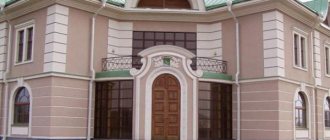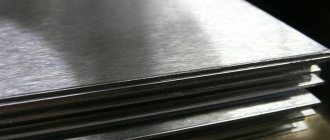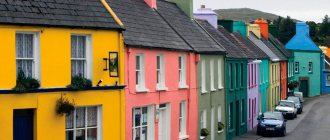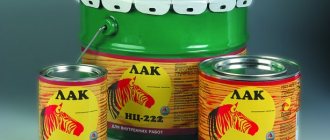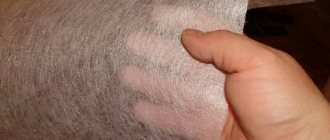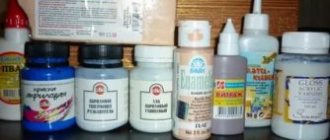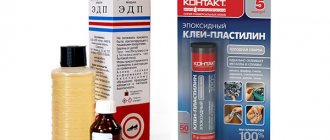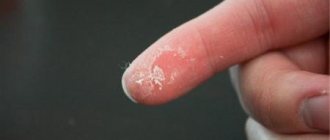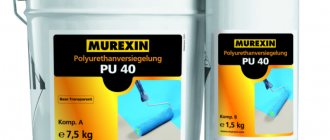To express your creativity through drawing, you need to choose the right materials. Today, a huge number of coloring agents have been created for art, among which painting paints are considered the most common. But they are also different. The types of painting paints and features of use will be discussed in detail below.
Story
They painted even in ancient times; at that time natural dyes were used. People figured out how to use materials of natural origin to create drawings; they used clay, soot, and mineral dyes. Usually they resorted to painting with ocher to get light colors; it was used in its pure form; for a darker tone, charcoal from wood was added.
The later period is characterized in terms of art by the appearance of paints obtained from animal fats. To create different dyes, people tried to mix different elements. About 5,000 years ago, cinnabar was invented, which dyes red. In Egypt they obtained the color purple; the white color for drawings was obtained from lime. The appearance of the watercolor variety is associated with Ancient China. Oil dyes appeared in the Middle Ages.
People figured out how to use natural materials to create drawings.
Artistic watercolor paints White Nights. Color, characteristics
Let's take a closer look: color, its name and characteristics ( colors
).
Metallic colors:
Pastel colors:
What are paints needed for and how do they differ?
In ancient times, paints were not used for decorative purposes, and not for admiring masterpieces. The purpose of creating the image was to be able to study the objects. Having drawn an animal, people sought to understand its features and structure. This helped make the hunt easier.
At that time, drawings played a practical role. Later, people began to draw to gain pleasure from contemplation and the process. It is impossible to create a masterpiece of painting without paints, so different types of media were invented for this purpose. There are special artistic paints that have a professional purpose. There are simpler types for a child’s creativity; drawing helps children develop.
If creating drawings is a professional activity, then artists carefully select suitable paints for themselves. The selection criteria are as follows:
- Density of strokes. To create denser layers, oil type and acrylic are used. Watercolor is distinguished by its fine layer structure;
- Resistant to water, if you want to get dense strokes, using water will not give the desired result;
- The brightness of the color, after drying the color may darken, turn pale, and fade. A similar reaction occurs depending on the type of product, as well as the brand;
- Cost, for artists, saving on this material is unacceptable, otherwise it will not be possible to create a masterpiece.
To create denser layers, oil type and acrylic are used.
Lesson 1 Necessary tools and paints
Calyxes. These are small metal containers that are attached to the edge of the palette with a clamp. They contain painting medium and, if there are two, some cleaning agent such as turpentine. You can use a tin lid from a jar. Washing jar. You will need a jam jar with a lid to hold the mineral spirits or turpentine for cleaning your brushes. Leave the dirty white spirit in the jar and close it - after a few days the dirt will settle to the bottom, and the clean white spirit can be poured out to be used again. After each painting session, first rinse the brushes in white spirit, then thoroughly clean with a rag and wash with warm water and soap, rubbing the soapy brush in the palm of your hand to completely remove the paint. Dry thoroughly and store with the bristles facing up. If you accidentally leave paint on your brush and it hardens, soak the brush in household brush cleaner and then wash as described above.
Rags. An old cotton garment or towel is essential for cleaning your brushes or for drying them when you need to pick up a different color with the same brush.
Facilities. You will have to mix a product into your paints to match the color and sometimes to thin it out. The simplest thing is white spirit. You can use pure turpentine, which smells better, but is more expensive, or if you don't like smells, try low-smelling thinners as an alternative. All of them can be used to clean palettes and brushes. You can buy the simplest, odorless thinner under the “Sonnet” brand.
Linseed oil is used by artists who prefer slow-drying paintings with a glossy finish.
Canvas. Commercially available pre-primed canvases that you can immediately start writing on are usually cotton or linen fabric stretched over a wooden frame (subframe). At the back there are small pegs (wedges) used to tighten the canvas when it sag, since the canvas is sensitive to changes in temperature and humidity. The canvas has a rough texture; a slightly textured surface holds paint better.
Canvas on cardboard. The canvas is glued to hard cardboard and is sold ready to use. It's cheaper than buying stretched canvas.
Easel. When painting in oils, it is important that the surface of the painting is almost vertical. There are a variety of easels available, from large wooden easels to lightweight metal or wooden and tabletop easels. You can work on a painting on a table, leaning it against the wall, as long as you prevent it from slipping.
Varnish. When your painting dries - this takes several months (white paint takes the longest to dry) - it needs to be varnished. This is necessary to protect the surface from damage caused by the atmosphere, leading to darkening of the painting. You will need a bottle of clear painter's varnish. The painting needs two varnish coatings: retouching varnish and undiluted painting varnish. To prepare retouching varnish, mix 50% pure turpentine with 50% painter's varnish. Apply the varnish with a wide household brush or a soft hair brush, placing the painting horizontally and working it from top to bottom. Leave the painting horizontally until dry (usually about an hour), then apply a second coat of undiluted painter's varnish in the same manner.
Kinds
There are different paints for the reason that you can perform different painting techniques with them. For example, there are paints for dot writing. To choose the right tool for a specific job that will help you get a high-quality and beautiful drawing, you should understand the features of the different options. The existing options will be discussed in detail below.
There are different paints for the reason that you can perform different painting techniques with them.
Watercolor
This type is often used when it comes to children's creativity. The name of the species means work using water. The execution of glazing techniques and shade stretches is comfortably done in watercolor; in order to obtain an unusual effect, some skill is required. For a child, this is an opportunity to explore the option of mixing colors and various drawing techniques.
For a child, this is an opportunity to explore the option of mixing colors and various drawing techniques.
Gouache
Gouache can be called a transitional medium between professional and conventional paints. Gouache differs from watercolor material in its better density. But it can be corrected with water, so defects can be easily corrected. Artists sometimes resort to combining watercolor with gouache to achieve an original effect.
Gouache differs from watercolor material in its better density.
Acrylic
Acrylic paints are distinguished by their versatility; they can be applied to glass, fabric, paper, metal and other substrates. The color does not lose its brightness after drying and becomes waterproof. The indelible property allows the painting to be cleaned after drying using water. The dot technique of painting with acrylic paints is popular among professionals. It has a fast drying rate, this must be taken into account when working.
Acrylic paints are distinguished by their versatility; they can be applied to glass, fabric, paper, metal and other substrates.
Oily
This type has been used for a long time; many masterpieces of painting are made with oil paints. They stand out for their durability. Application requires certain skills, they help to draw small details, the long drying time makes it possible to correct defects. It is possible to obtain the desired shade by mixing colors on the canvas itself.
This type has been used for a long time; many masterpieces of painting are made with oil paints.
Tempera
Tempera is the ancestor of gouache and watercolor. It appeared earlier than the oil type; earlier it was popular to make tempera from eggs, water and other components. Using it makes it possible to draw strokes of different thicknesses, it can be diluted with water, and it dries quickly. After drying, there is some change in saturation. But the brightness lasts the longest over the years. After complete drying it becomes indelible. The fast pace of drying requires the painter to obtain the required shade quickly, otherwise the paint in the palette will dry out.
Using it makes it possible to draw strokes of different thicknesses, it can be diluted with water, and it dries quickly.
Neon
The neon type is distinguished by its ability to accumulate light, then in the dark it stands out in strokes and glows beautifully. A similar effect is usually used to decorate interior details and is often used in children's rooms. This is achieved due to the presence of luminescent powder in the composition. Children will really enjoy creating a picture from such a product. Neon paints in cans are convenient for painting surfaces.
The neon type is distinguished by its ability to accumulate light, then in the dark it stands out in strokes and glows beautifully.
Children's paints
For children's creativity, gouache and watercolor paints can be used, as well as special finger paints that mothers of babies love. The latter type provides a good opportunity to develop a child and is safe for health. When choosing a product for children, it is important to choose one without a strong odor and without harmful elements in the composition.
Finger paints provide a good opportunity to develop a child and are safe for health.
With glitter
If you want to add shiny elements to the picture to create a more original work that will be bright. Or to highlight interior details, you can use glitter paints for painting. Sequins can be of different sizes. Glitter paints are an easy way to create a beautiful effect.
Glitter paints are an easy way to create a beautiful effect.
Pastel
Pastel paint for drawing has been known for a long time. It was invented before oil paints; great artists used pastel paints along with oil paints. They are distinguished by their shape, usually a pencil; gum, wax, mineral oils and others can be used as a base. They are applied softly to the surface, they can be retouched and rubbed. Correction is made with an eraser. Pastel paints are best used on paper. Not applicable on smooth substrates.
They are applied softly to the surface, they can be retouched and rubbed.
Contour
Contour paints are made on the basis of acrylic. They differ from the acrylic type by the degree of viscosity. With their help, a 3D effect is created; obtaining a three-dimensional image can be easily achieved with them. Often chosen for decoupage. Universal, can be applied to different surfaces, but there are subtypes for individual materials.
With their help, a 3D effect is created; obtaining a three-dimensional image can be easily achieved with them.
Waterproof
The most popular waterproof paints for creating paintings are acrylics. Color saturation and durability, ease of use, and a wide palette make them an excellent option for artistic ideas.
The most popular waterproof paints for creating paintings are acrylics.
Mother of pearl
Pearlescent paints create an unusual effect on the surface, the layer looks original. If the task is to refresh the picture, then mother-of-pearl will look unconventional. You can find a large number of types of these paints in different colors on the market.
Pearlescent paints create an unusual effect on the surface, the layer looks original.
Briefly about paints for painting. Pigments.
Dear friends!
I have long wanted to make a selection of the most common paints that are used for painting.
What are the properties of each of the paints, what is included in the composition of the paints. Here is a small selection or short article for information. The article is very short, but informative. Later I will talk about each paint in a separate article.
Pigments
- coloring matter - can be of mineral or organic origin or prepared chemically from natural materials, mainly clays containing metal oxides or salts. In addition to these pigments, in the practice of painting, dyes of plant origin are used, obtained from the leaves, bark and roots of plants (indigo saffron and others), as well as pigments obtained by firing grape, peach seeds and firing animal bones. According to Pliny (1st century AD), the most ancient paints were: melinum (white pigment), yellow paint (apparently ocher), red (Sinope soil) and black, obtained artificially. When studying the paint layer of Fayum portraits dating back to the 1st-3rd centuries AD. e., it was found that their painting layer consisted of four colors: white (lead white), yellow (ochre), red (earth paint) and black (charcoal). But in some portraits an organic dye was found, and in others two types of cinnabar, as well as green earth, umber, organic black mixed with indngo and copper blue.
According to ancient and medieval authors, the most ancient paint was lead white, which was obtained artificially by oxidizing lead shavings with vinegar. The range of colors available to ancient and medieval painters was limited. There was a special need for green pigments. A common paint in those days was verdigris, the color of which could range from green and green-blue to blue-green and blue. This paint, used in the preparation of tempera paints, was widely used by painters of the 15th-17th centuries. The study of the paint layer of paintings from the 15th to 19th centuries made it possible to establish that during this period a total of up to three hundred types of different pigments were used, which indicates that artists were searching for the most suitable paints for painting. But at different times, the number of paints actually used was limited. For example, from 1430 to 1600, painters used only eleven pigments for their palette, and in the heyday of painting, in the 17th century, only thirteen. Southern Dutch painters of the 15th century and their followers in the 16th century worked with three blues, two yellows, two reds and two greens, white and black. Painters of the 17th century used four blues, three greens, two reds and yellows, white and black, and only in the 18th century and especially in the 19th century did the palette of artists become significantly enriched and improved.
To work in various painting techniques, suitable types of paints are used. All paints contain color pigments and additives. For example, to hold pigment particles together and ensure their reliable contact with the working surface, a binder is added to paints.
Depending on the type of technique, the binder can be of different types: gum arabic in watercolor and gouache techniques, egg yolk in tempera, drying oil in oil painting, acrylic emulsion in acrylic technique.
Watercolor
Watercolor paints belong to the group of adhesive paints. The name “watercolor” comes from the Latin word “aqua” - water, since water is a solvent for this type of paint. Watercolor is produced in the form of tubes or cuvettes. Each species has a specific type of use. Watercolors on the market are represented by artistic and children's watercolors.
Gouache
Gouache (translated from French as water-based paint), like watercolor, is an adhesive water-soluble paint. When making gouache paints, the same dyes are used as when making watercolors. This is an opaque paint that lies in a dense layer on paper. In gouache paints, white is used as an additive in different quantities, which gives them a whitish appearance after drying.
Oil paints
Oil paints are made from pigments ground into drying oil. Compared to other painting materials, oil paints can be used for much longer - as long as they retain moisture. In oil technique, wet paint applied does not change its color after drying.
Tempera paints
In terms of its properties and composition, tempera occupies an intermediate position between glue and oil paints. Tempera paints can be diluted with water and painted on paper, cardboard, and also, like oil, on canvas primed with emulsion primer.
Acrylic paints
Acrylic art paints can be used in traditional techniques of easel oil or tempera painting. But unlike tempera, acrylic paints change color less when drying and you can work on more flexible substrates without the risk of cracking the film.
Children's paints
High-quality children's watercolor paints are safe for children, since they are based on a solution of harmless corn glue, dextrin, and natural honey-containing additives (molasses, sugar).
Pastel—
Pastels are made in the form of short colored sticks - rimless pencils made from dry paint powder mixed with bonding or whitening agents. Pastel pencils come in hard, medium-soft and soft.
Pastels are written and drawn on the rough surface of paper, cardboard, primed canvas, suede, parchment, etc., starting with hard pencils and ending with soft ones; The colorful powder is rubbed with your fingers or a blender. Pastels are characterized by a velvety matte surface
paint layer, sonorous and pure color, softness of colors that retain their original freshness. However, pastel must be protected from touches and shocks: its colors easily crumble, and their fixation is possible only due to the partial loss of the main advantages of the pastel. The pastel technique was especially popular in the 18th century. (Maurice Quentin de Latour, ) again attracted the attention of artists in the 2nd half. XIX century (Edgar Degas, I. I. Levitan)
Most oil pastels are made from mixtures of pigment, hydrocarbon waxes and animal fat. In a certain sense, its composition is more reminiscent of wax crayons than soft pastel.
Being predominantly a wax-based material, oil pastels are not susceptible to changes during the drying process, which is different from oil paints. The external characteristics of the material remain unchanged unless it is treated with white spirit (which dissolves the pastel composition) and heated to high temperatures (which leads to melting). The nature of oil pastels allows you to create effects that are unique in other drawing techniques. However, experts do not recommend using oil pastels if you want lightfast and long-lasting properties. Its more typical use is for works intended for subsequent reproduction or as preliminary material for computer graphics.
There are many works on NM written in different techniques, some of which I presented in the article.
———
There are many publication sources!!
Internet to the rescue!
Based on materials from the Internet and YAM!
Compound
Depending on the constituent elements contained in the product, its properties will differ, and what base can be used for drawing with them. So there are separate types for paper and canvas.
Depending on the constituent elements contained in the product, its properties will differ.
What types of paints are there for drawing on paper?
The watercolor type is known to everyone; this is where acquaintance with paints usually begins; if you paint with watercolors on the same type of paper, the pictures will be bright, and the base itself will not suffer from exposure to water. Acrylic, finger, tempera, and gouache types can also be used on paper.
The watercolor look is known to everyone; this is where acquaintance with paints usually begins.
What types of paints are there for painting on canvas?
Canvas is a material on which you cannot paint with any paints. Acrylic and oil types are suitable for this purpose. Initially, the plot is drawn with charcoal and pencil, and then the colors are achieved by painting.
Initially, the plot is drawn with charcoal and pencil, and then the colors are achieved by painting.
Colorful abundance
Today, art stores, office departments and a whole legion of online sites are ready to provide us with a huge amount of paint. And a variety of types, characteristics and qualities.
Naturally, a beginner may be confused by this variety of paints for painting. Not only are there so many types of them, but each company also has its own categories and names of paints and colors! How can you remember everything, figure it out, choose exactly what you need?
Tokyo Pigment store with 4200 types of pigments
Professional artists can immediately name what they need, and choosing the necessary material for drawing can only take them 15-20 minutes. Things are completely different for a beginning artist, or even a child who wants to draw, but does not know what is needed for this.
The variety of paints available today will help you choose exactly what you need. And if you have not yet decided on the main material of your creativity, it is better to try different types of paints to understand what you are most drawn to, and only then purchase them thoroughly and professionally.
By the way, it is not at all necessary to immediately buy some expensive paints; you can try a cheaper option or a student set with small tubes to save money on other paints. You can also go to several painting master classes. They usually already give out all the materials and you don’t need to buy anything yourself. Well, if you are still determined, then read my article and go to the store to buy paints!
Required Tools
The list of necessary tools depends on professionalism. Artists need a palette, brushes of different sizes and from different materials, canvas/paper/cardboard. Oil-based paints require a thinner; it will easily remove them from the skin of your hands and bring them to the desired consistency. An easel and varnish may be required to improve the longevity of the work.
The list of necessary tools depends on professionalism.
Colored paints, as I already said, are marked according to their light fastness class (that is, the duration of color retention in museum conditions):
* – low-light-resistant paints (10-25 years); ** – medium lightfast paints (25-100 years); *** – light-resistant paints (100 years or more).
If instead of an asterisk (*) there is a circle (o) or nothing at all, then such paint will last no more than 10 years.
But colored paints also have one more characteristic - hiding power (or transparency), on tubes it is marked with a square:
- – opaque paints;
- – translucent paints
- – transparent paints.
On imported paints and some domestic ones, this marking may be slightly different - the square is divided in half not vertically, but diagonally, and the concept of semi-opaque paint is introduced, which is designated like this, and translucent paint is marked like this. But to be honest, I don’t understand how semi-opaque paint differs from translucent paint. Reminds me of the definition of pessimists who see a glass of milk half empty where optimists see a glass half full. ))
Artists usually use their own terminology for transparency. For them:
- opaque paint is body paint;
- translucent paint is semi-body paint (or semi-lesing, which is the same thing);
- transparent paint is glaze paint.
To help you understand the meaning of this division:
- Body (opaque) paint completely blocks the color of the dried paint underneath. That is, if you put body yellow on top of blue, you will get a yellow brushstroke.
- Half body paint is about half clear. That is, in the case of the previous combination of colors, you will get green.
- Glaze paint is so transparent that when applied to the previous layer, it will simply slightly change the shade of the underlying strokes. That is, our blue, after applying yellow, will receive a greenish tint.
Therefore, glaze paint is often used in glazing to impart the desired color to an area of gray tonal underpainting (grisaille). In this case, you will get the color you apply, but its lightness (tone) will depend on the brightness of the underpainting. Where it is white, the paint will look light, where there is a light gray area on the underpainting, the paint will look darker, on dark gray it will look even darker, and on black it will look almost black.
I also use this property when creating multi-layered multi-color imprimatura. The transparency of the paint allows me to create very effective, I would even say mystical imprimatures. See an example of such an imprimatura in my article What is an imprimatura.
However, when mixing paints on a palette, you are unlikely to notice the difference between transparent and opaque paint, although when applying this mixture to canvas, the difference will still be visible. I will also note that the transparency of the paint is not absolute - the thicker its layer and the thicker it is, the less transparent it is, the more of its color it contributes to the underlying layer. And starting from a certain stroke thickness, it completely covers everything underneath. Therefore, it can easily be used in painting ala prima, which uses thick and thick (impasto, as artists say) strokes.
Our four paints have the following characteristics:
- ██ Cadmium yellow light: ***
- ██ Pink durable kraplak: **
- ██ Ultramarine light: **
- ██ Mars brown dark transparent: ***
The pigments of glaze paints are transparent in themselves and give the paint layer a feeling of gloss and depth. Body paints transmit light only if they are heavily diluted, but a sense of depth is still not achieved. Glaze paints almost do not lose their saturation when mixed, while body paints quickly turn gray if you mix very different colors. The old masters preferred transparent paints, hence the mystical depth of color in their paintings, often mentioned by art critics. On the palettes of the Impressionists, on the contrary, all paints, with the exception of ultramarine, were body paints, since they always laid strokes separately from each other, trying not to mix them, since the factory paints of that time were precisely what gave rise to the mass outing into nature and impressionism itself , when mixed they gave dirt.
Application
Paints can be used to create unusual interiors using patterns, classically for creating paintings. You can also draw with special looks on the face and body, for example, at a party for a theater act, to create makeup. Use is limited only by human imagination.
Paints can be used to create unusual interiors using patterns, classically for creating paintings.
How to choose
When choosing, you should pay attention to the brand; well-known brands produce high-quality products from good ingredients. Before purchasing, check the condition of the composition; they should not be dry; it is worth checking the expiration date of the product. Harmlessness is important for children's creativity.
When choosing, you should pay attention to the brand; well-known brands produce high-quality products from good ingredients.
Anyone can draw; you can find a variety of creative options on the market. The creator will be able to realize any fantasy if he carefully considers the choice of coloring agent. If you want to do art professionally, you should not skimp on paints.
